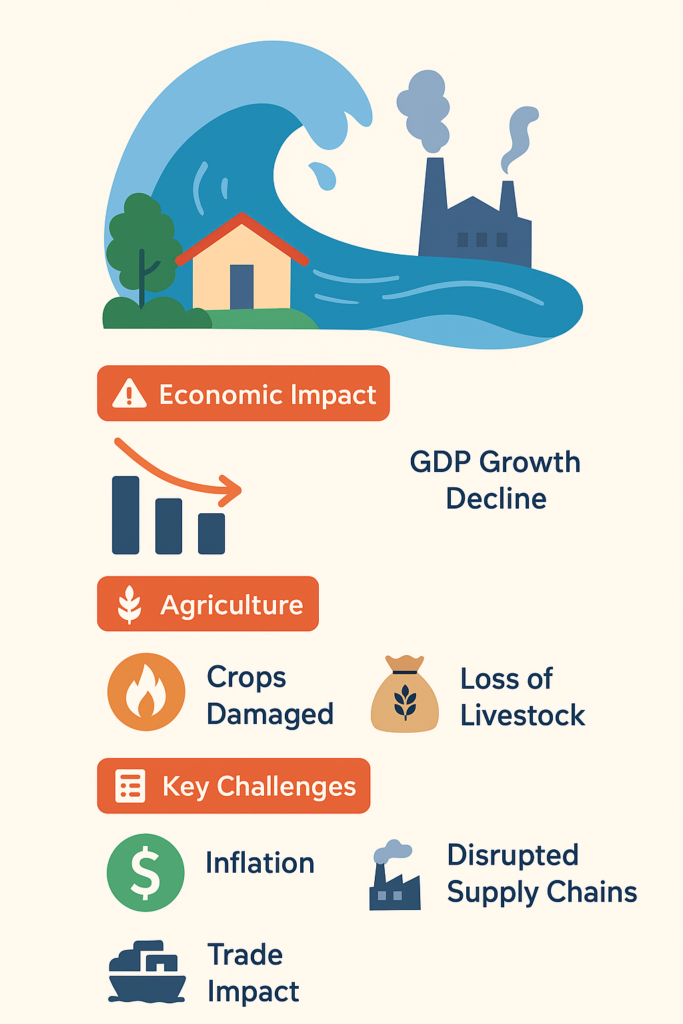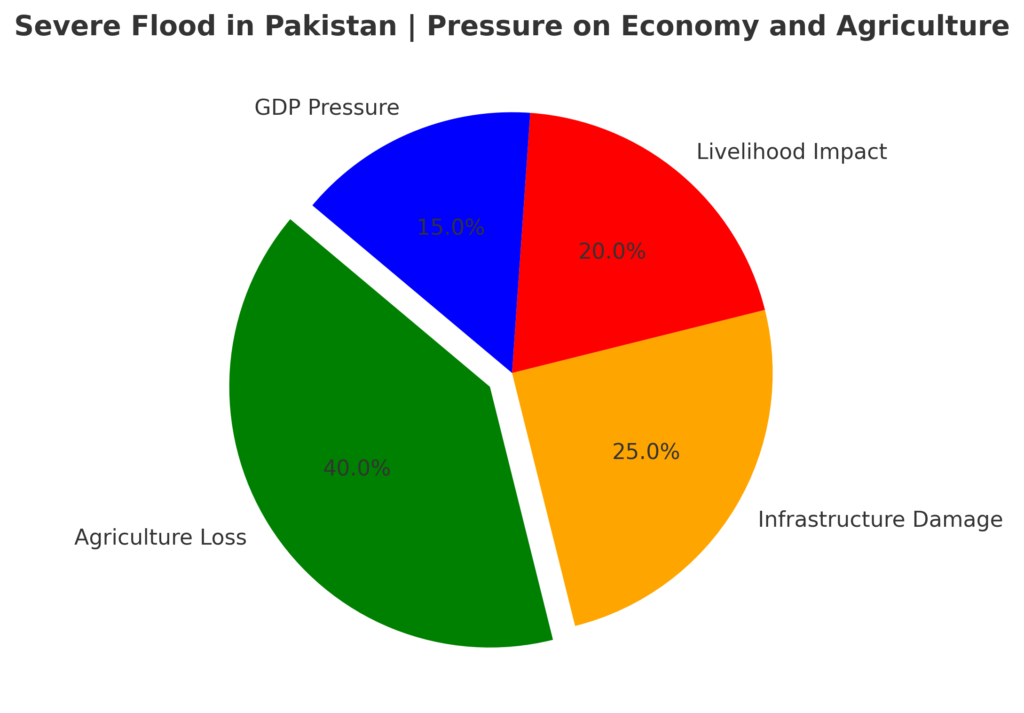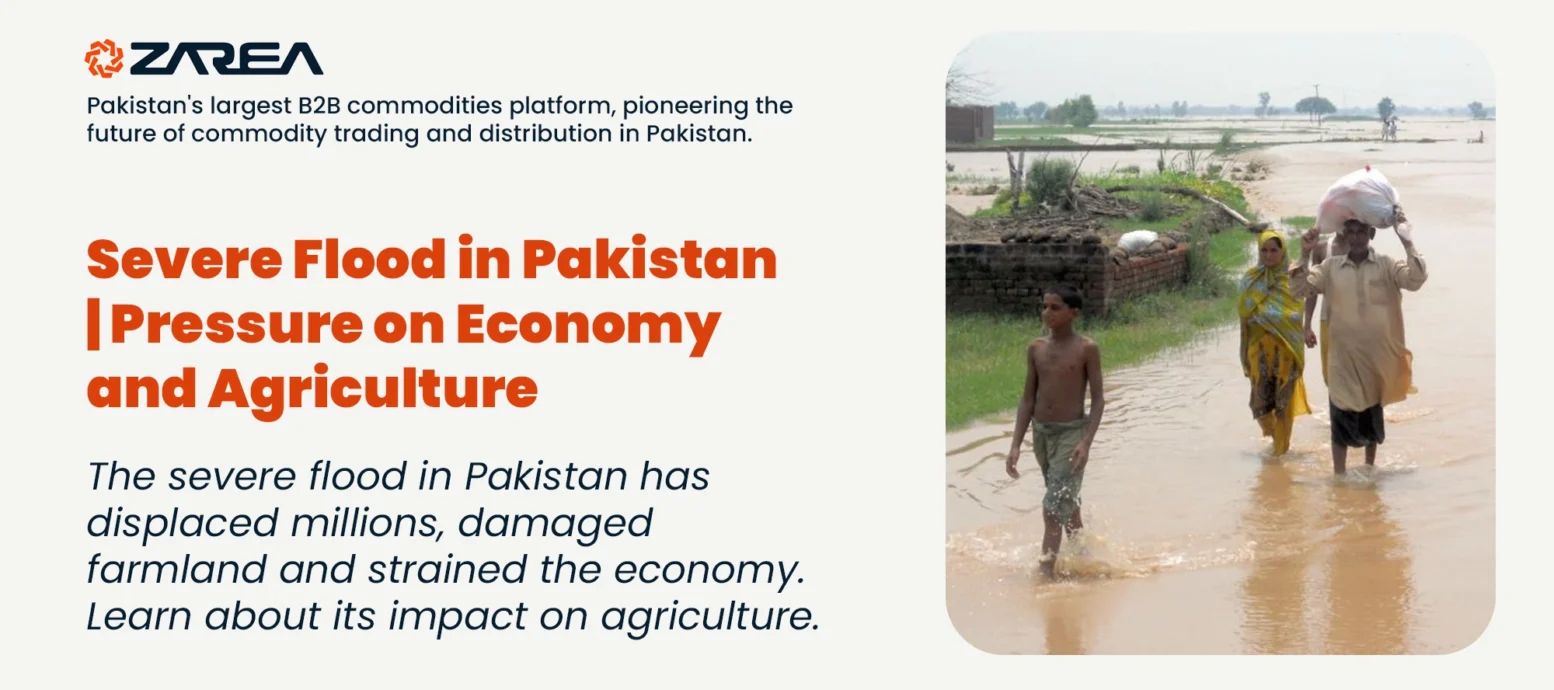Introduction – Flood in Pakistan:
A massive flood in Pakistan has once again highlighted the nation’s susceptibility to natural calamities. Meanwhile it had catastrophic effects on lives, livelihoods and economies as well. On the other hand almost two million people including Punjab and an additional 150,000 in Sindh have been evacuated. Moreover the emergency situation was already applied nationwide as surging waters engulfed communities and farms. This catastrophe has claimed over 900 lives since late June. It has not only highlighted the problems of inadequate infrastructure and disaster planning but the importance of climate adaptation as well.
More than 354,000 people have been affected by the floods, which have also caused at least 30 fatalities in adjacent India. According to Pakistan’s National Disaster Management Authority, tonnes of relief goods, such as tents, blankets, and water filtering equipment, have been sent to Punjab’s flood-affected districts.

Flood in Pakistan – Humanitarian Toll:
The current year’s monsoon floods have devastated homes and uprooted millions of people lives. It has also left numerous families stranded. Meanwhile the boats in Sindh and Punjab continue to struggle against powerful currents. It has made rescue efforts very dangerous. According to these conditions the results are very sad. A number of people have died in evacuation efforts. Dangerously some rescue boats overturned on the Indus River.
Many impacted households have had to decide between maintaining personal safety and safeguarding their possessions. Some families have remained behind despite many evacuation orders out of concern for theft or the irreversible destruction of their houses and animals.

Go to Zarea today! Browse our product lists, buy what you want, and start saving money now! It is the largest commodity marketplace in Pakistan that connects businesses to businesses (B2B). Additionally, it sets the standard for the nation’s future trade and product distribution.
Economic and Agricultural Impact:
The foundation of Pakistan’s economy, agriculture, has suffered greatly. Important crops including rice, sugarcane, and cotton have been destroyed as thousands of acres of farmland have been drowned. The flood in Pakistan is predicted to substantially disrupt supply lines at a time when household finances are already being strained by food prices.
As local manufacturing fails to recover, the economic cost will also be felt in the form of increased gasoline and food import prices. The floods have the potential to worsen poverty, halt rural output, and increase the strain on foreign reserves, as 40% of the population lives below the poverty line.
Climate Change and Governance:
According to climate specialists, it’s not just a natural tragedy. They also claim that Pakistan’s floods are a compounding issue of governance and climate change. Meanwhile extreme rain, melting glaciers and inadequate water management are combining to produce a destructive cycle. toko56 Moreover, critics contend that the issue has gotten worse over the period. Unfortunately it’s the result of Pakistan’s low investment in disaster prevention so far. Water storage facilities, flood-resistant infrastructure and efficient warning systems could play a key role in controlling it.
Authorities have announced a climate emergency and pledged to create a 300-day action plan in response. However, the preventative is in the absence of consistent political commitment and international backing. That’s why such actions run in the danger of continuing to be reactive. Back in 2022, there was a huge flood with the months of intense rain that is assumed as one of the deadliest floods in history. That flood killed over 1,700 people and affected over 30 million.
International Support:
The United States has authorised financing and sent disaster response teams, while the United Nations has set up $5 million for emergency assistance. But Pakistan needs far more than short-term assistance. Modern infrastructure and better community-level catastrophe preparedness absolutely pay relief to people. On the other hand, climate adaptation programs or ongoing funding will all be necessary to increase resilience.
Funding contemporary infrastructure and neighborhood-level disaster preparedness initiatives. The effects of future disasters can be considerably lessened through them. Meanwhile putting early warning systems in place can protect vulnerable populations. In addition constructing climate-resilient buildings also plays a protective role. Additionally, Pakistan must have to raise public awareness and educate people about the risks of disasters. It can also enable communities to take preventative action to safeguard their surroundings and themselves.
Final Thoughts:
The current flood in Pakistan is a warning signal for the nation’s future. In addition it’s a humanitarian emergency as well. Pakistan will remain caught in a cycle of recurring floods, economic strain, and social hardship. The challenge is monumental unless they implement structural reforms and robust climate adaptation policies. But both the task and the need to act are enormous.
FAQ’s:
When was the last flood in Pakistan?
The most disturbing and devastating floods in Pakistan occurred in 2010. Meanwhile this flood killed between 1,700 and 2,000 people and affected many. Moreover, an estimated 20 million more were affected according to records. The 2022 floods were one of the worst floods ever recorded in Pakistan’s history so far.
Which areas of Pakistan are flood hit?
Floods have been affecting Sialkot, Narowal, and Jhang badly since June 2025. The Punjab Provincial Disaster Management Authority (PDMA) has already released a report on it. They claimed that the floods were most severely hit Sialkot, Narowal, and Jhang in Punjab the three districts. On the other hand, nationwide rescue and relief efforts began to overcome its disastrous effects.
What is the reason for floods in Pakistan?
Natural disasters include heavy monsoon rains and the swift melting of Himalayan glaciers. Further, human actions like deforestation, unplanned urbanisation and encroachment on river floodplains are also included in it. These actions are described as the main causes of flooding in Pakistan. Meanwhile, climate change has increased the extreme weather events’ frequency and severity. Moreover, it’s also damaging rivers and natural drainage systems and making them more vulnerable. These problems are made horribly worse if Pakistan does not execute a well planned safety measures.
How many died in Pakistan floods in 2025?
The greatest number of deaths was in Khyber Pakhtunkhwa, where flash floods between August 14 and August 16 killed at least 328 people, primarily in Buner District, with at least 274 confirmed dead and over 200 reported missing in Buner alone.

































